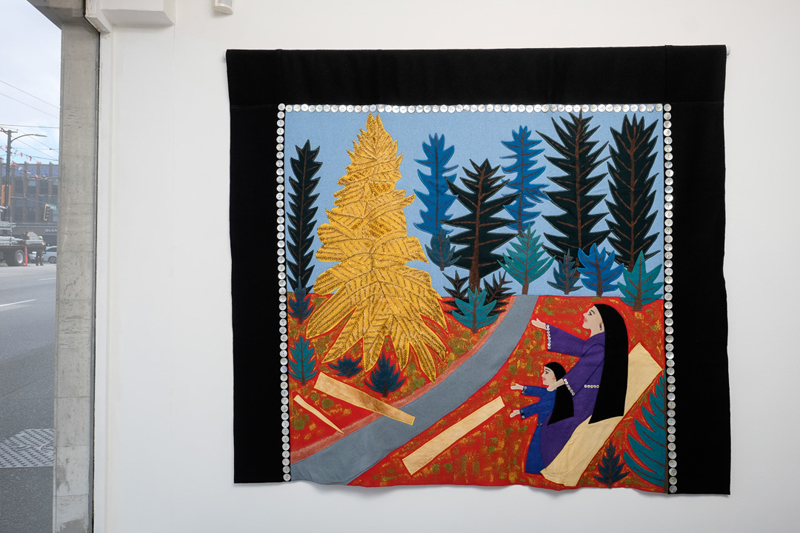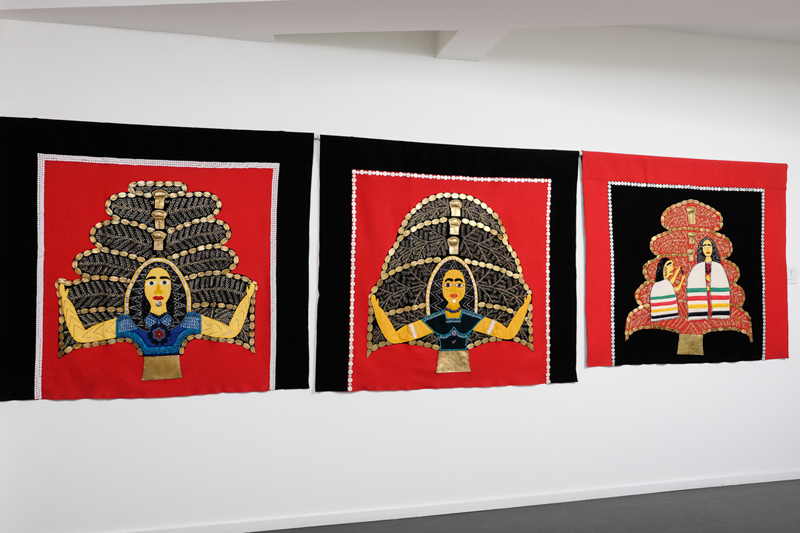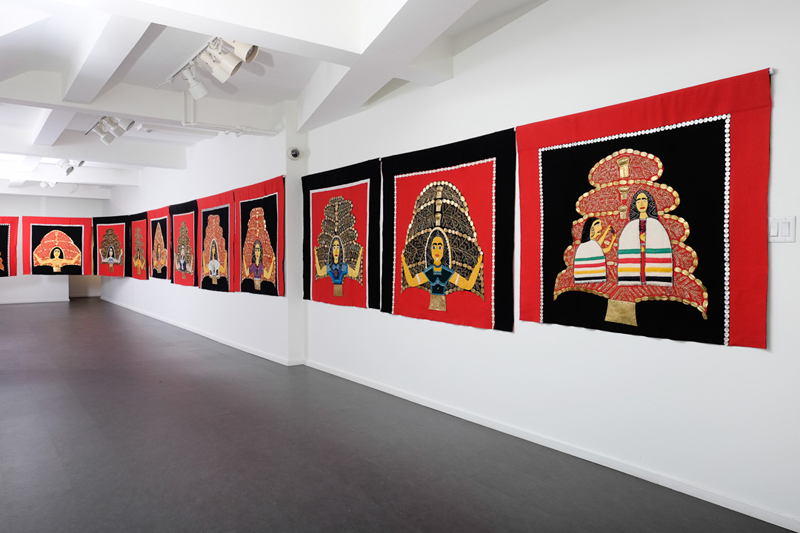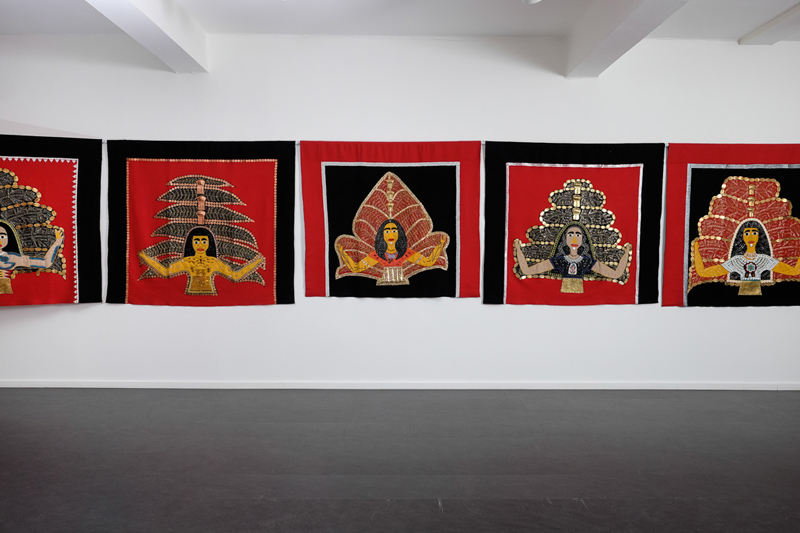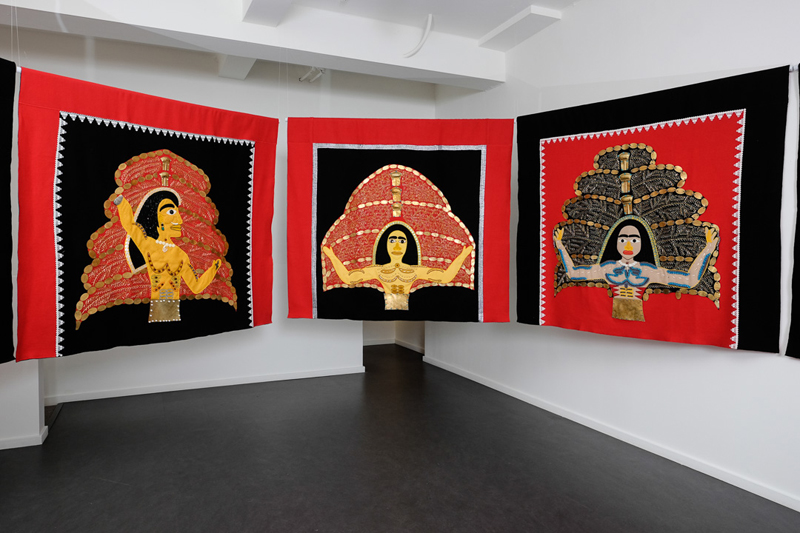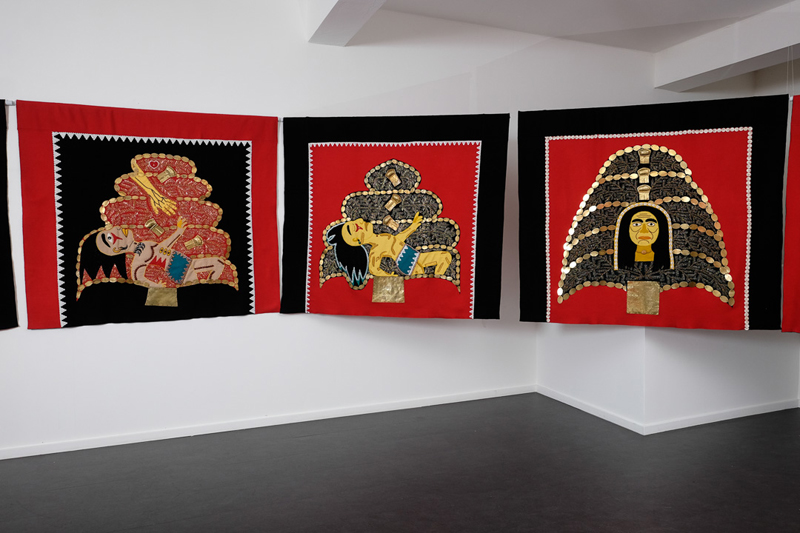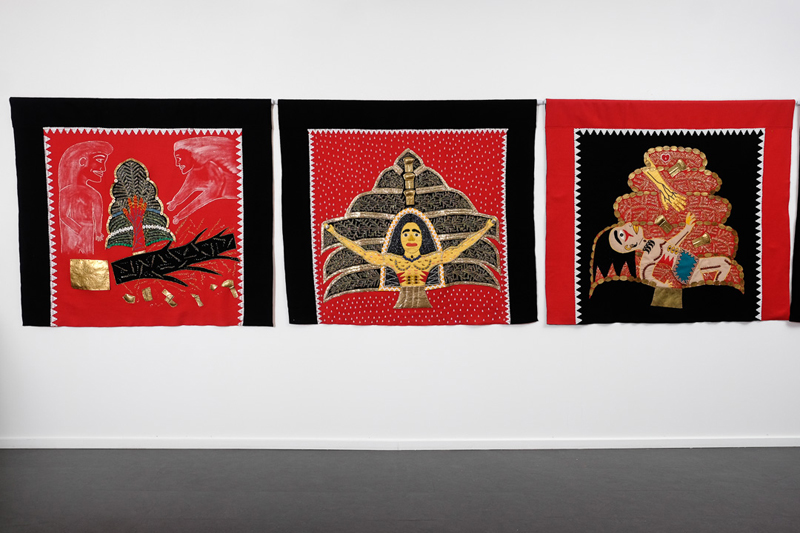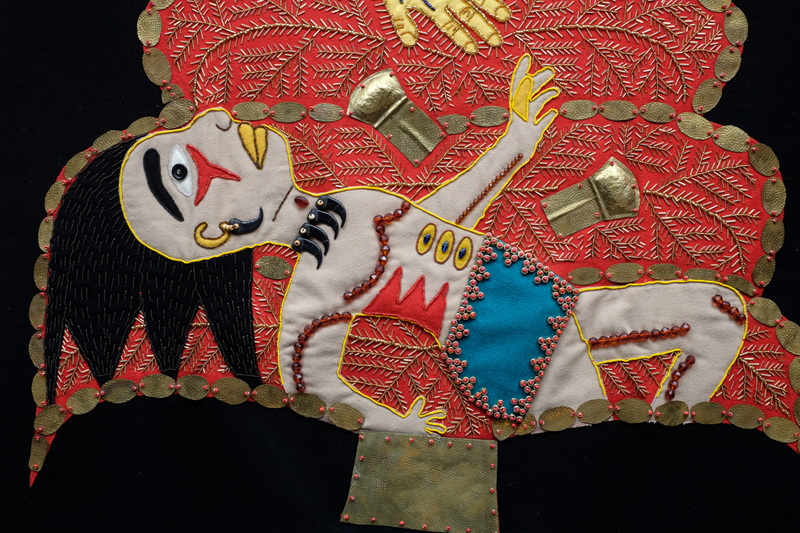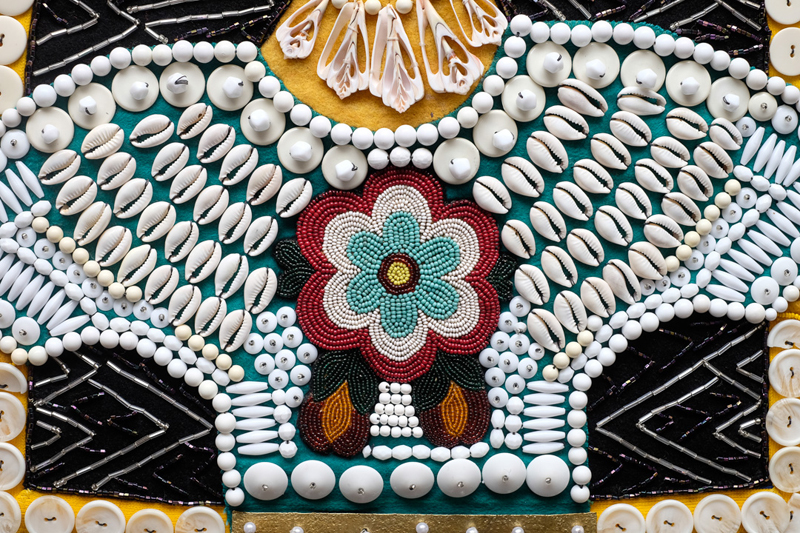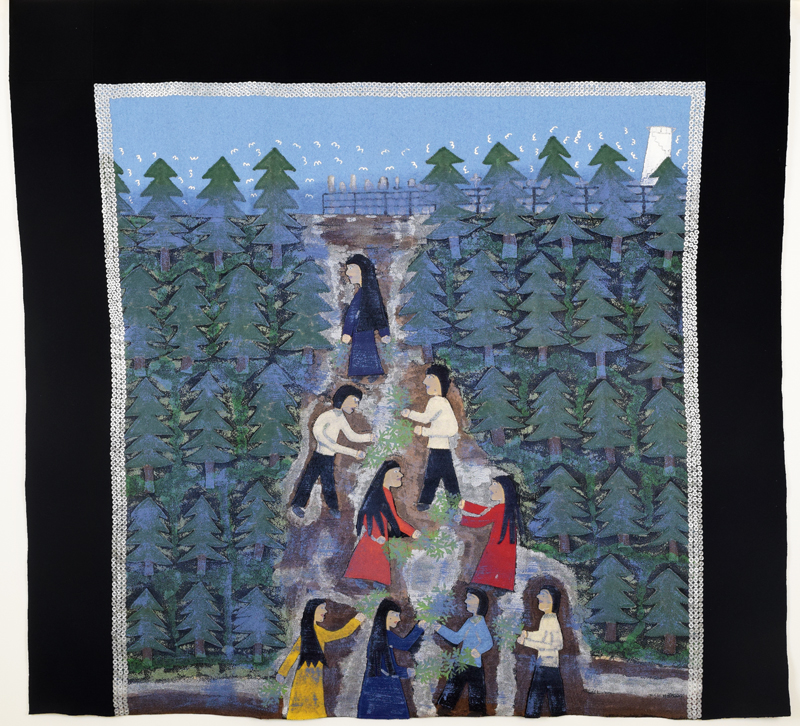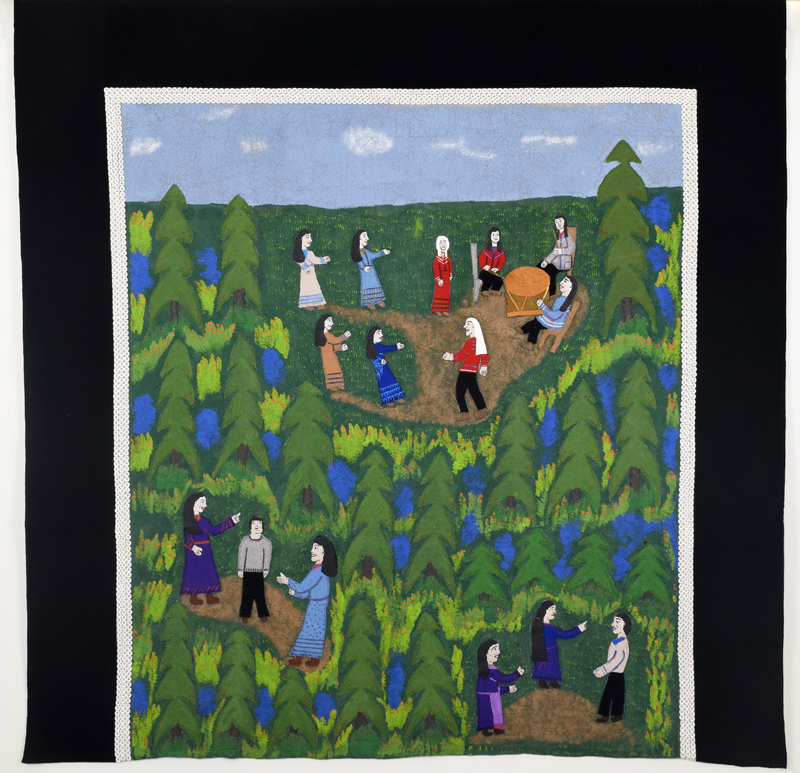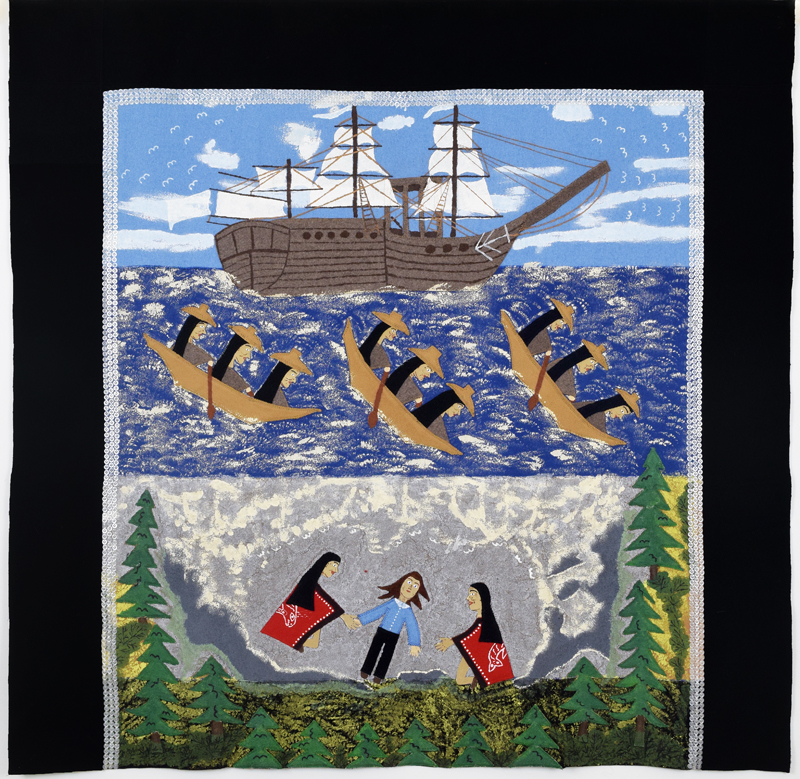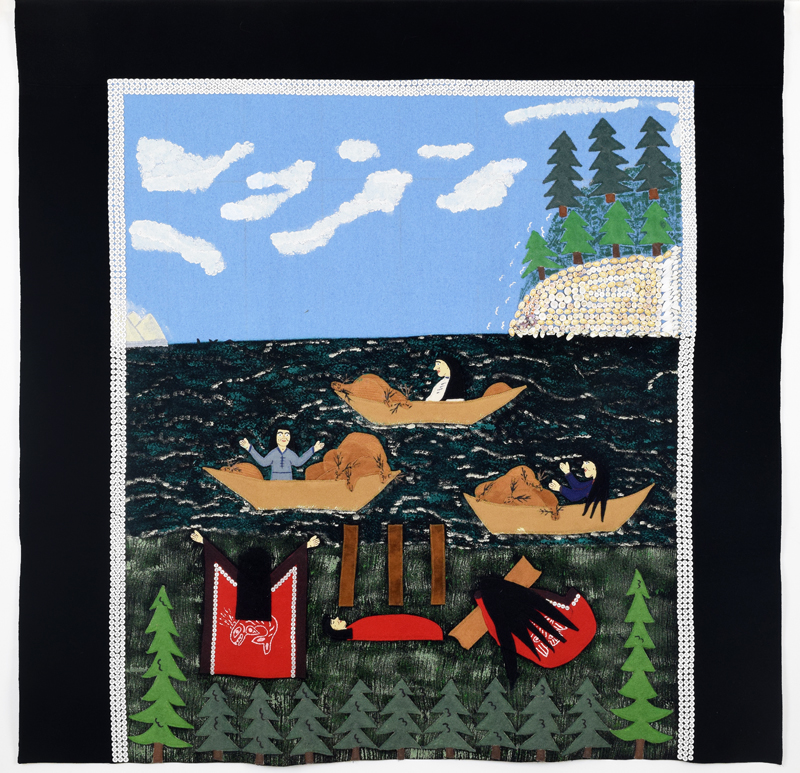The Story of K’iid K’iyaas: Hazel Wilson’s Cycle of Golden Spruce Robes
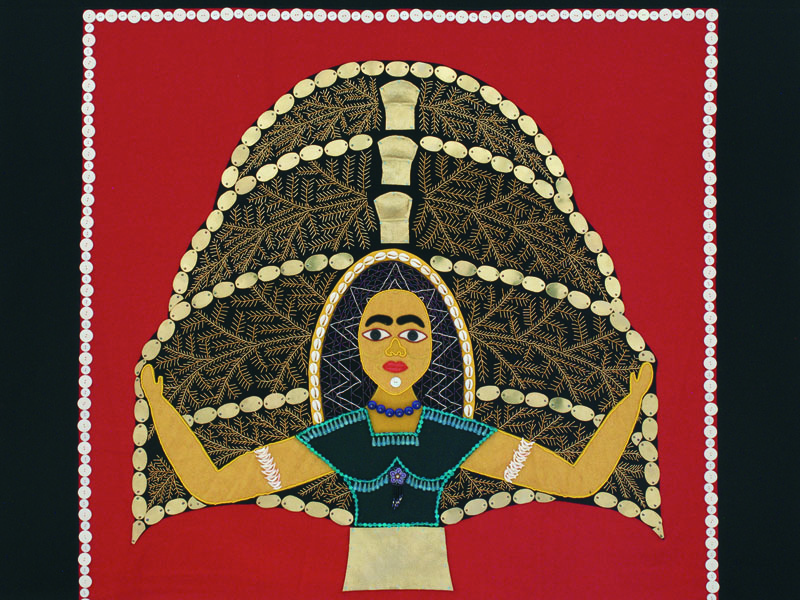
For more than three centuries, Haida Gwaii, an archipelago off the northern coast of British Columbia, was home to a rare and impressive tree. Rising from the western bank of the Yakoun River in the centre of Graham Island, the Golden Spruce was a 50-metre-high marvel notable for its luminous golden branches. Scientists have accounted for its unusual appearance as the result of a genetic defect that prevented the tree’s needles from properly processing the sun’s energy. To the Haida the Sitka Spruce was a living being with a remarkable past. According to legend, the tree, K’iid K’iyaas, was originally a man who walked the earth more than 300 years ago. Some versions of the legend also describe an earlier Golden Spruce that stood on the same spot for three hundred years, before being burned to the ground by lightning. This was Hiiling Jaat, or Thunderwoman, an aunt to the later tree. Aunt and nephew, the legend says, were the sole survivors of a catastrophe that had destroyed their community, leaving them alone in the world.
In January 1997, news arrived that K’iid K’iyaas had been cut down by a non-native logger and environmental protester in an act properly understood as eco-terrorism. To the Haida, the tree’s loss was akin to murder. Hazel Wilson, an artist based in Vancouver, was deeply affected by the tragedy, since she was intimately familiar with the tree and its origins, having spent her childhood in northern Haida Gwaii and in the tree’s presence. In the years following 1997, Wilson drew on the image of the Golden Spruce to make several button blankets, colourful robes worn by the Haida on ceremonial occasions. Then, in 2005, she undertook an entire series of blankets detailing the full life and death of the sacred tree. Comprising 17 robes in total, each featuring attached pieces of several kinds of metal, buttons and shells, Wilson’s magnificent cycle follows the story of K’iid K’iyaas, from its beginnings in the reaches of time, through the following centuries, to its ending with the great tree’s death and rebirth as, now, a symbol of memory and survival.
Wilson’s Golden Spruce cycle was first shown at the Marion Scott Gallery in winter 2005 to instant acclaim. It has not been seen in its entirety since that time. In response to the COVID-19 health crisis, we have decided to make this powerful work accessible to the public once more. Its themes of devastation, loss and survival in the wake of ruin speak directly to our own times. In one version of the story, a catastrophic flood was the cause of the devastation from which the aunt and her nephew emerged as the only survivors. In another, a sudden ice age overwhelmed the people. In a third version of the legend, the cause of the loss was an epidemic—smallpox—a transmissible disease that would decimate the Haida population in the 1800s following their contact with Europeans, leaving the survivors almost defenseless against the forces of colonialism. Unwilling to favour one account over the others, Wilson’s recreation of the Golden Spruce story incorporates elements from all three.
